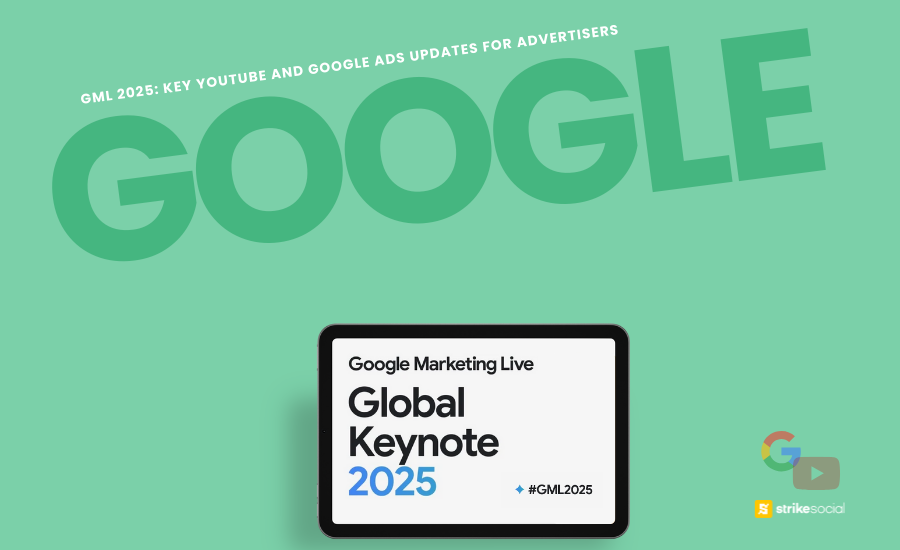Strike Overview
- Google Marketing Live 2025 delivered sweeping changes that directly impact how media teams plan and execute performance and brand campaigns across Google and YouTube.
- Google is pushing advertisers toward an AI-native campaign structure that’s faster, more automated, and more visual across surfaces like YouTube, Search, and Shopping.
- With AI becoming central to campaign setup, targeting, and ad placements, now’s the time to assess how your current setup aligns with Google’s future direction — and how fast your campaigns can adapt.
Jump to Section
Google Marketing Live 2025: Key Announcements and Recap
Google Marketing Live 2025 delivered a clear message: Google is doubling down on AI to power the future of search, discovery, and advertising. This year’s keynote showcased how Google and YouTube are evolving with smarter ad tools, deeper audience insights, and AI-native campaign structures that will shape how brands connect with consumers.
Philipp Schindler, Google’s Chief Business Officer, revealed that 83% of users engage with Google and YouTube daily, and 65% of people turn to Google or YouTube first when making a purchase decision. For advertisers, this confirms what we already know—Google and YouTube are where the journey starts, and staying competitive means aligning with the latest advancements from the Google Marketing Live 2025 keynote.
From AI-powered search campaigns to new YouTube ads and Demand Gen updates, here’s your streamlined recap of the biggest takeaways from this year’s Google Marketing Live event.
1. PMax, AI Search, and Demand Gen Take Center Stage
At this year’s Google Marketing Live, Sylvanus Belt reveals the “Power Pack”: Performance Max, AI Max for Search, and Demand Gen. These AI-powered campaigns are designed to give advertisers greater automation, transparency, and control across the entire Google Ads ecosystem, making it easier to scale both performance and brand campaigns.
Performance Max
- Performance Max (PMax) allows brands to show ads across Search, YouTube, Discover, Gmail, Maps, and more – all from a single campaign. Announcements from Google Marketing Live 2025 address past concerns around transparency and brand safety by running PMax ads:
- Transparency Tools: Channel performance reporting (currently in beta) allows advertisers to see exactly how each Google surface contributes to campaign results. This gives advertisers a better understanding of where their PMax campaigns perform across different platforms.
- For clearer ROAS insights, Disney+ leveraged channel-level reporting to identify which platforms and campaigns (PMax vs. YouTube) drove conversions. They uncovered overlapping search queries and gained a clearer understanding of cross-channel performance.
- Transparency Tools: Channel performance reporting (currently in beta) allows advertisers to see exactly how each Google surface contributes to campaign results. This gives advertisers a better understanding of where their PMax campaigns perform across different platforms.
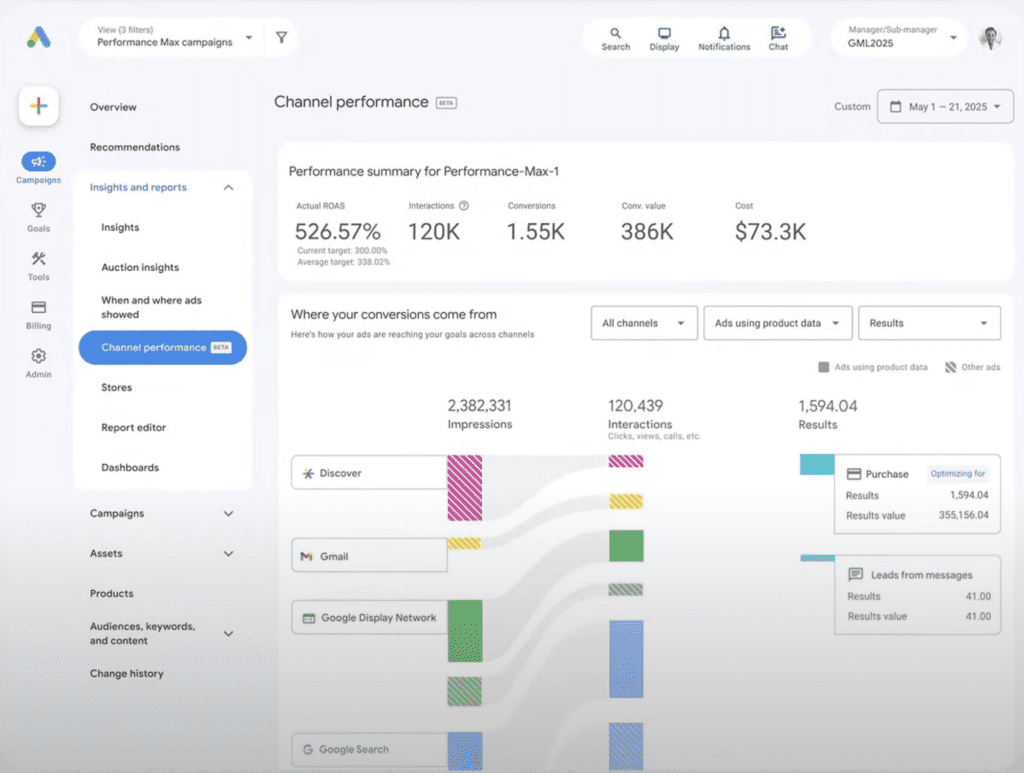
AI Max for Search campaigns
- Built specifically for Search, it’s a one-click AI enhancement to let your campaigns adapt to how people search today, with less reliance on traditional keywords. Here are some of its features:
- Smart Bidding Exploration: Automatically finds high-performing search queries and allocates spend toward conversions that matter.
- Keywordless AI targeting: Offers full visibility into what users searched, what they saw, and what led to conversions.
- AI-generated Creatives: Uses your landing page content to generate headlines and descriptions that better align with user intent.
- AI Max works alongside your existing Search campaigns, with reporting tools that clearly show which AI-powered assets drive performance.

Demand Gen
- Demand Gen focuses on converting interest into action across highly visual Google surfaces such as YouTube, Discover, and Gmail. It continues to evolve with:
- Performance Enhancements: Includes view-through conversion optimization and more sophisticated bidding strategies.
- Improved Channel Controls: Offers tighter management over where your ads appear.
- Coming Soon – Custom Acquisition Goals: This allows for more precise targeting based on specific business objectives, further refining campaign effectiveness.
Further Reading
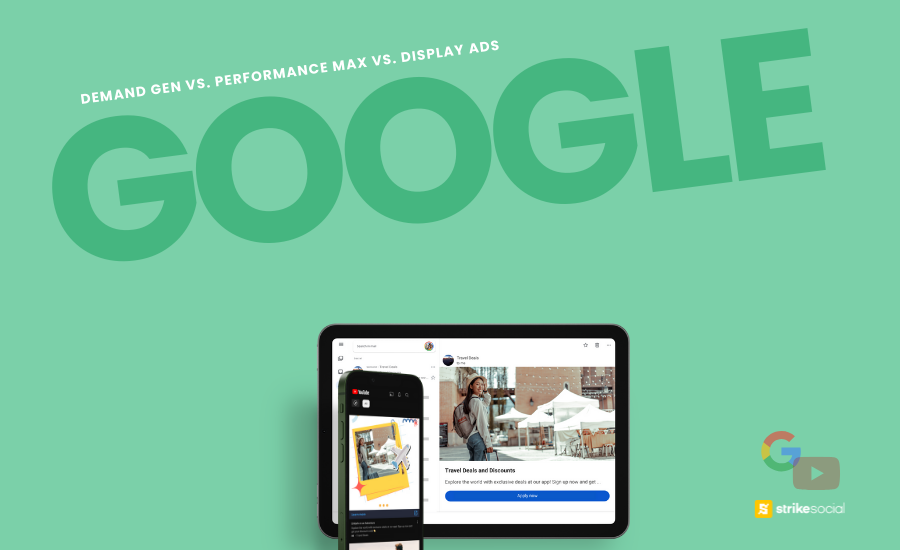
Demand Gen vs. Performance Max vs. Display Ads
Demand Gen, Performance Max, and Display Ads each offer unique strengths, even though they may share some overlapping placements and features. Understanding how these formats differ is essential to selecting the one that best supports your advertising objectives.
Because paid ad campaigns must work alongside organic, Google Marketing Live also addressed this for businesses and brands. With AI Overviews now changing how users interact with Search, advertisers can expect higher-quality clicks from high-intent audiences.
To succeed in this new environment, Google recommends:
- Creating people-first content that directly answers real user questions.
- Emphasizing strong visuals (images, video, and product content) plays a bigger role in both ads and organic discovery.
- Aligning your ad creative and copy with AI-powered search behaviors and discovery journeys.
2. YouTube Ads Get Smarter and More Visual
As of 2025, YouTube is officially the #1 platform for streaming watch time in the U.S., making it a key player in both performance and brand advertising. With over 90 million hours of shopping-related content consumed daily, YouTube is rapidly becoming a more immersive and commerce-ready platform.
At Google Marketing Live 2025, several major YouTube ads upgrades were announced, all aimed at helping brands thrive in a video-first, creator-led environment.
To keep up with shifts toward Shorts, Connected TV (CTV), and creator-first content, Google Ads now includes built-in generative AI features for faster creative production:
- Easily generate video and image assets using generative AI directly within Google Ads
- Smart editing tools make resizing, reformatting, or localizing assets for YouTube Shorts, horizontal video, or CTV easier.
- Creative experimentation is now native to YouTube campaigns, making it easier to test multiple versions and quickly scale top performers.
Further, YouTube Shorts and Connected TV have now become core mediums for performance and shopping strategies:
- YouTube Shorts as storefronts: Last year’s spotlight was on YouTube Shorts, which enabled app install campaigns without leaving the platform. This year, Shorts is evolving into a more shoppable experience, allowing brands to turn vertical videos into dynamic product placements. This change makes it easier for viewers to move from discovery to purchase without leaving the app.
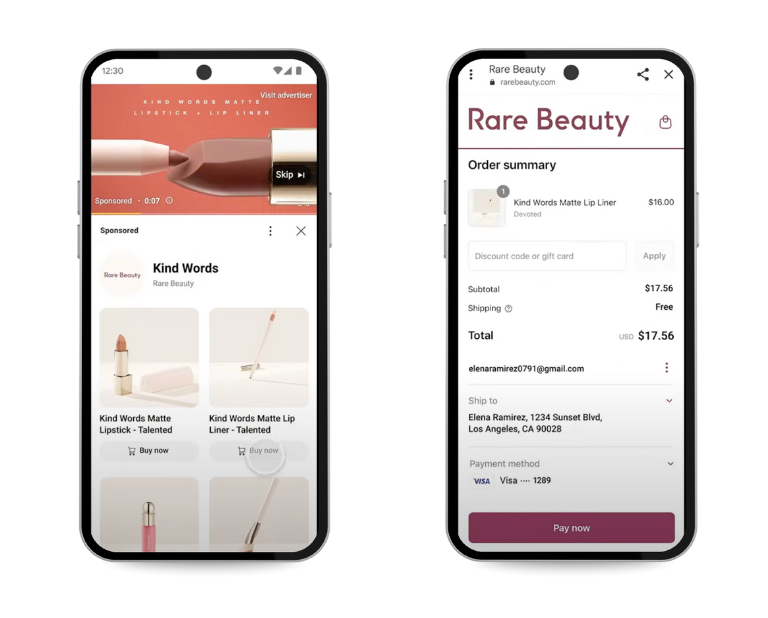
- CTV ad upgrades: New interactive, shoppable formats are being rolled out for YouTube TV and CTV inventory. These formats offer larger creative canvases, allowing brands to deliver more immersive ad experiences on connected devices.
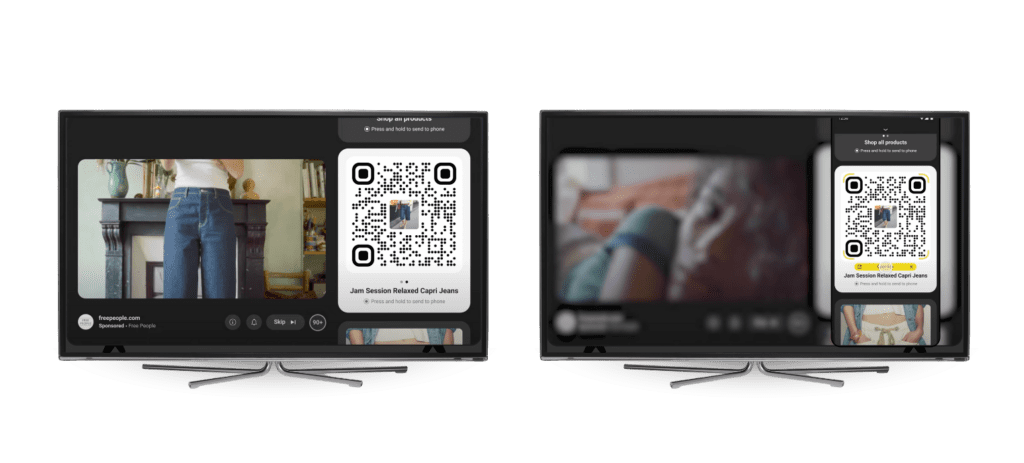
Further Reading
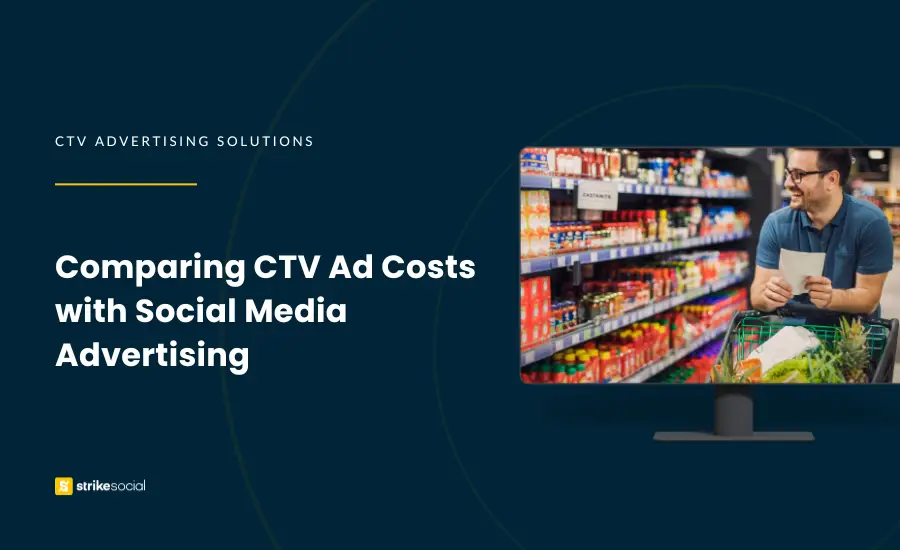
Guide to CTV Advertising Rates and Metrics
This guide covers essential benchmarks, from average CPMs and CPVs to key viewability rates, giving you the insights needed to budget smarter and plan more effectively for your next CTV campaign. As one of the fastest-growing ad formats in the U.S., understanding CTV pricing is more important than ever.
3. How AI Is Transforming Google Search Ads
Even in a social-first world, Google Search remains a trusted final step in the buyer’s journey. According to Google, 70% of users turn to Search to evaluate products they first discover on platforms like TikTok or Meta. This is especially true for Gen Z audiences, who may find brands on social but rely on Google to verify them.
During the Google Marketing Live stream, the spotlight was firmly on how Google AI is transforming Search campaigns into more intelligent, intent-driven ad experiences: bringing users closer to conversion.
- Rolling out first to U.S. desktop users, AI Overviews will now include ads contextually placed alongside AI-generated answers. These placements offer brands a powerful new surface to connect with high-intent users during deeper search discovery moments.
- AI Mode in Search enables more fluid, conversational experiences. Users can ask follow-up questions, and your ads remain contextually present, aligned to evolving intent across multiple queries in a single session.
- Google AI is also moving from assistive to agentic. This means the AI doesn’t just answer: it acts. When users express strong purchase intent, agentic AI can now help them complete transactions directly in Search, such as booking appointments or making purchases.
- With multimodal understanding, Google’s AI can now interpret and respond to visual inputs, voice prompts, and contextual cues, all while matching ads dynamically based on creative and intent.
Other Key Takeaways from Google Marketing Live 2025
Whether you’re a brand, agency, business, or creator, the key theme from this year’s Google Marketing Live is clear: the ecosystem is expanding, and everyone stands to benefit. While some updates go beyond direct advertising tools, they highlight how Google, YouTube, and Google AI are broadening opportunities across more formats and surfaces.
- YouTube Shorts Unlocks New Brand Discovery. Shorts continues its surge: engaged views are up 20%, with over 2 billion monthly users, and 58% of viewers say they’ve discovered new brands through Shorts ads.
- Shoppable Ads Now Span More Surfaces. Video ads, including Shorts, can now appear directly in Search and Shopping results, creating a more seamless path to purchase across formats.
- Influencer Ads Powered by Creator Hub. Google is making it easier to collaborate with YouTube creators by giving advertisers access to creator performance stats, costs, and fast-track tools to launch partnership ads using existing creator content.
- Attribution and Prospecting Controls. GA4 now features Attribution Path Reporting to help track branded search lift from YouTube ads. Advertisers can also exclude users who’ve previously seen your content or visited your app, giving more precision when prospecting.
- AI Creative Tools for Google Merchant Center. The Merchant Center can now sync videos from your website, YouTube channel, or social media profiles — and automatically suggest or generate ad-ready creative assets. This makes scaling product-focused campaigns faster and more dynamic.
Scaling With Confidence in the New Google Ads Era
Google and YouTube are no longer just platforms for search and content: they’re becoming a connected, assistive engine for discovery, decision-making, and conversions.
As the updates from Google Marketing Live made clear, the future of advertising on YouTube and Google platforms is built for full-funnel strategies. Whether you’re optimizing Search, scaling YouTube Shorts, or testing new AI formats, agility and automation will determine your success.
The shift towards more AI-driven campaigns and high-intent touchpoints means advertisers must rethink how they structure campaigns, interpret performance, and prioritize content.
Working with an expert partner that can help you optimize your video and search campaigns is an excellent first step. Strike Social’s ad tech and managed services are built for scale, speed, and performance across every surface Google touches.
Join Strike Social’s growing network of successful clients.
Get a personalized walkthrough of our ad activation and management tools from our expert team.
Article by
Cameron Wallin, Strike Social’s VP of Sales
Cameron combines over six years of startup sales expertise with a deep understanding of video advertising on YouTube, TikTok, and social platforms. He leads Strike Social’s COOP and government partnerships, driving value through compliant, high-performance strategies built for public sector campaigns.


